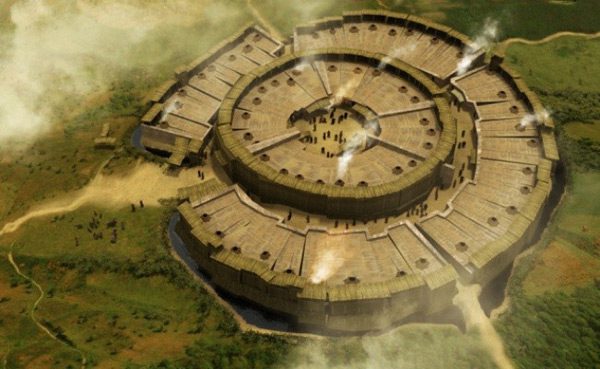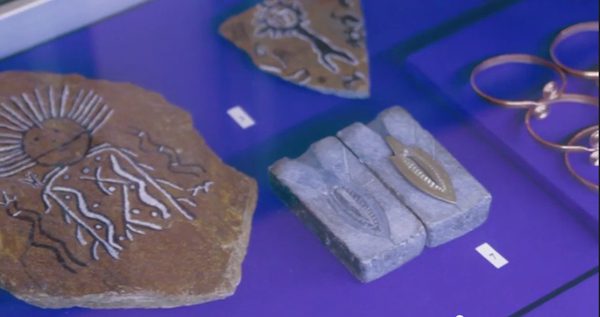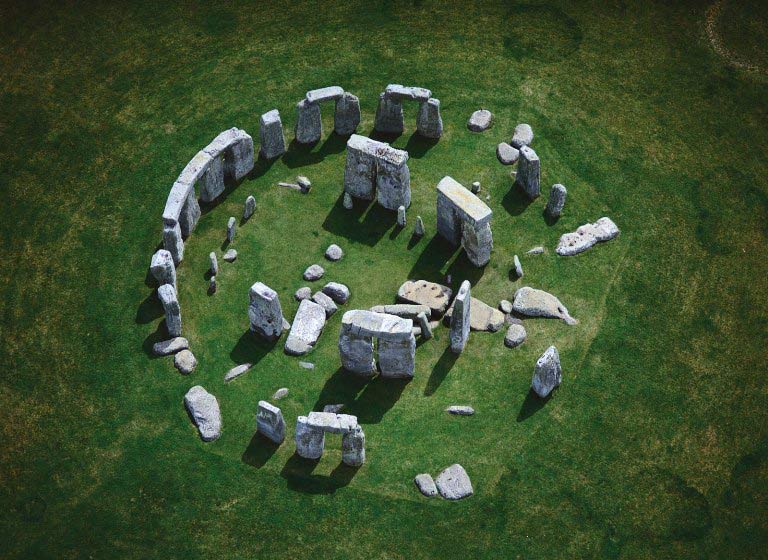Located in the southern steppe of the Ural Mountains, 8.2 km to the north-northwest of Amurskiy, lies the astonishing architectural complex of Arkaim. Many archaeologists and researchers have boldly referred to this archaeological site as the Stonehenge of the land of the white birch.

Artist’s depiction of Arkaim.
According to researchers, this archaeological site dates back to the 17th century BCE, although some hypotheses suggest that Arkaim may have existed much earlier, possibly from around the 20th century BCE. Many references describe Arkaim as a “city-state”, a land of towns, and it is considered one of the most unusual areas in Russia.
In recent years, archaeologists have discovered several artifacts that reinforce the proposed hypothesis, indicating that this archaeological site in Russia is, in fact, much older than the timeline established by mainstream archaeologists. Some archaeologists even assert that this archaeological site is contemporaneous with the Egyptian pyramids, although the exact age of the pyramids remains a mystery.
The Unique Architecture of Arkaim
The structure of Arkaim can only be described as magnificent. This architectural edifice was built in a circular layout, with an outer diameter of about 160 meters, surrounded by a deep moat of approximately two meters outside the enclosing wall. Additionally, the walls of Arkaim are even more impressive, with nearly 5 meters in width and 5 meters in height. Archaeologists conclude that Arkaim is a settlement meticulously designed with far more historical and archaeological significance than previously thought.
According to researchers, this solid fortress features a total of four gates; the widest gate is located to the southwest, while the other three gates face three of the four cardinal directions (east, west, south, north). Outside the Arkaim walls, the settlement also includes two 2-meter-wide canals that connect to the outer moat.
According to archaeologists, 35 houses used to be situated close to the outer wall of Arkaim, each with access to the main street of this ancient settlement; while there were also 25 houses located within the settlement.
The defensive structure of Arkaim is also quite advanced; the builders of Arkaim not only erected impressive walls and a complex water canal system, but they also constructed a “labyrinth” at the entrance as a trap, making it extremely difficult to penetrate the fortress. There are alternative hypotheses suggesting that these labyrinths were not built for defensive purposes but solely for religious and ceremonial purposes.
Infographic about Arkaim.
Arkaim stands out distinctly in many aspects compared to other settlements from the same historical period. While other cities were constructed with less detailed defensive structures and a more “linear” (straight) design, Arkaim was formed with a tightly interconnected design, where all the buildings are linked together as a single structure, maximizing the use of building space.
Researchers surveying Arkaim have found artifacts such as pottery, metalworking furnaces, and livestock pens. They believe that the ancient inhabitants of Arkaim were highly skilled metalworkers.

Artifacts found at Arkaim during the exhibition titled “Arkaim – Looking Through the Glass.”
Based on the study of animal bones found at the site, scholars believe the domesticated animals primarily included horses, cattle, sheep, and goats. Regarding agricultural activities at Arkaim, researchers once again lean towards various hypotheses. While some believe that the fields at Arkaim were cultivated by the resident inhabitants, others argue that the discovery of smaller settlements from the same period in the vicinity of Arkaim suggests that this was, in fact, the original agricultural area of Arkaim.
Arkaim is not only distinctive in its design and construction, but the houses within this settlement are also remarkably unique. It is believed that each family was responsible for protecting their wealth, and the rooftops found at Arkaim may have served as thoroughfares—some archaeologists believe that the roads on the rooftops were wide enough to accommodate a carriage.

Reconstruction model of the Arkaim settlement based on field research results.
Arkaim is also a very sophisticated settlement, which in some cases, showcases unique technologies that function far beyond those of other settlements, thanks to its complex drainage system and sedimentation tanks. Some archaeologists suggest that such an ancient drainage system has never been discovered anywhere else in the world, making it a unique feature of Arkaim.
Arkaim and Stonehenge
Some researchers believe that Arkaim is not a settlement at all, or at least not a permanent one. Some assert that those who lived at Arkaim occupied it only during certain times of the year, suggesting that this structure may have had some religious or spiritual significance, even being compared to the famous megalithic site Stonehenge.
Some researchers believe there is a profound connection between Arkaim and Stonehenge. Certain astronomers who have studied both archaeological sites conclude that Arkaim, like Stonehenge, is an astronomical observatory, with “ultimate precision.”

The megalithic structure of Stonehenge in England. (Photo: britannica)
Researchers point out that Arkaim and Stonehenge are nearly at the same latitude, and both are located in a valley shaped like a bowl and surrounded by hills.
Some other researchers describe Arkaim as a “swastika (卍)” city, a “Mandala” city (a circular representation of cosmic religion), and even as the “ancient capital of the original Aryan civilization, as described in the Persian scriptures.”

Swastika symbols of the Aryans found at Arkaim (compared with Hindu symbols).

Swastika artifacts from the Arkaim period.
To attract more public attention, Arkaim was declared a national archaeological reserve in 1991.
Archaeologist Gennady Borisovich Zdanovich explains: “I see Arkaim as the best example of the integration of primitivism, unity, and integrity through the combination of very distinct functions.“
Arkaim is believed to have existed for about three hundred years before being destroyed by a massive fire. According to some researchers, this fire was caused by the inhabitants of this ancient settlement.
Mysterious Phenomena and Legends Surrounding the Ancient City of Arkaim
It is said that if you approach this ancient city, your watch will malfunction, the air temperature will fluctuate suddenly within five minutes, and your heart rate, body temperature, and blood pressure will experience inexplicable changes. Even the Earth’s magnetic field is said to become unstable.
Did ancient people utilize a special type of energy that could influence the surrounding environment? Or is this evidence of extraterrestrial technology left behind? Arkaim means “the place where humans and God meet” in Russian, which adds to the mystery of this location.
The circular complex of buildings here resembles a gigantic flying saucer, and some strangely shaped oval skulls have also been found, with the back of the heads completely deformed, resembling extraterrestrial skulls. However, similar to many urban legends, these are merely speculations by UFO enthusiasts and those unaware of the truth.
In reality, the circular complex was simply designed by ancient people according to astronomical laws, and these unusual skulls belonged to a tribe known as Sermatia, who practiced head binding from a young age, resulting in their skulls becoming oval-shaped.

The construction of Arkaim is believed to be by the first Proto-Indo-Iranian speakers of the Sintashta culture, which some scholars believe represent the Proto-Indo-Iranians before they split into different groups and migrated to Central Asia, then to Persia, India, and other regions of Eurasia.
Arkaim is an ancient city from a prehistoric civilization, showing that humans 4,000 years ago created a high level of civilization and intellect in a challenging environment, allowing modern humans to understand their lives and culture. It serves as a textbook on prehistoric civilization, demonstrating that human civilization and intellect are closely interconnected and that ancient civilizations could learn from one another.
The archaeological work at the ancient city of Arkaim has excavated less than one-third of its area, and many secrets are still waiting for us to uncover. The ancient city of Arkaim belongs to all humanity, and its existence has brought us much inspiration and surprise.



















































